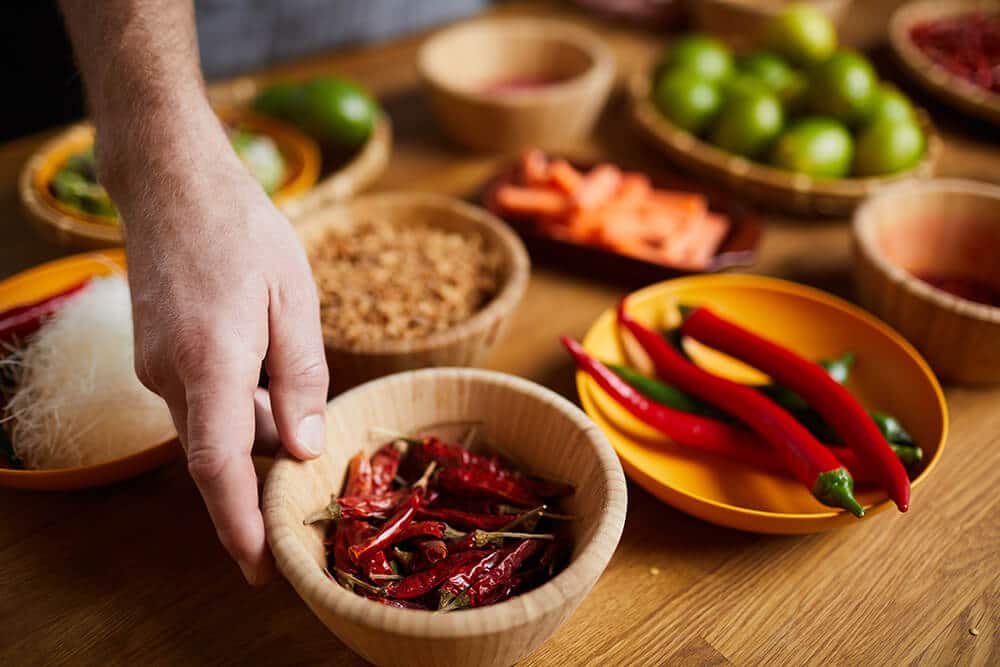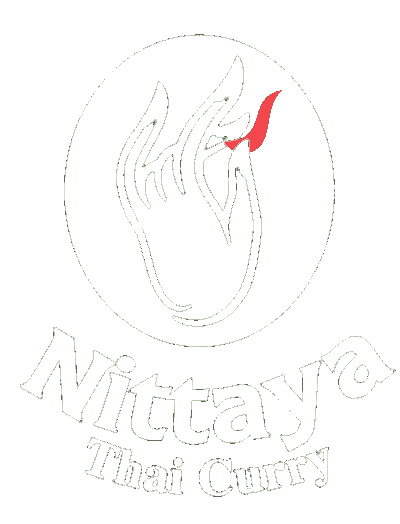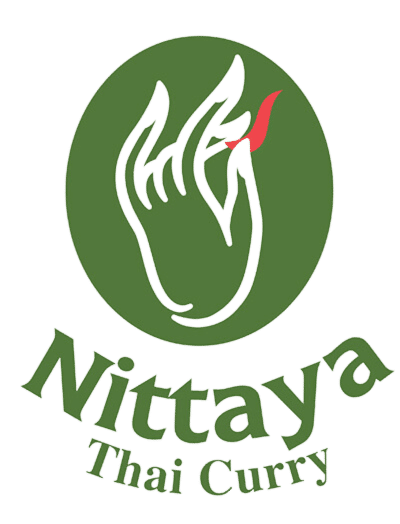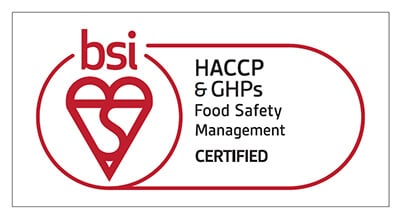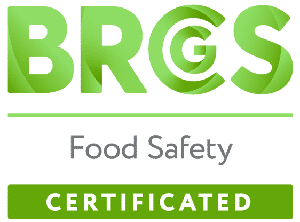How To Eat Like a Local in Thailand
Table of Contents
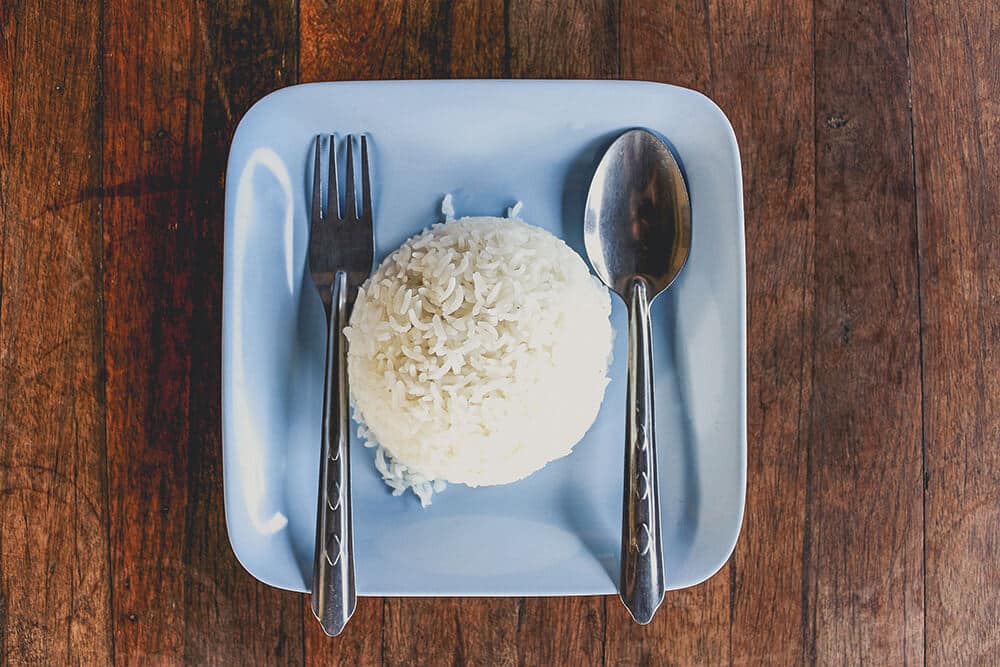
1. Thai people eat with a spoon and fork
In Thailand, the primary dining utensils are a spoon and a fork. The spoon is the main utensil for eating while the fork acts similarly to a knife in Western dining; it is simply used to push food onto the spoon. This method makes perfect sense given the nature of Thai food, which often consists of rice combined with dishes that have a soupy consistency (Thai curries, for example) or thin sauces (such as stir-fries). Embracing the Thai way of eating can enhance the culinary experience, making sure you get more flavor out of every bite.
You won’t find knives on the table in Thailand, as Thai dishes typically don’t require cutting. Most food is already prepared in bite-sized portions. If you do need to cut your food into smaller pieces, you can use the side of your spoon to do so. The unique utensil usage can be surprising to foreigners who are accustomed to using spoons only to eat soups or other soft foods. Then again, it can be equally surprising for Thai people to observe a foreigner eating with a fork!
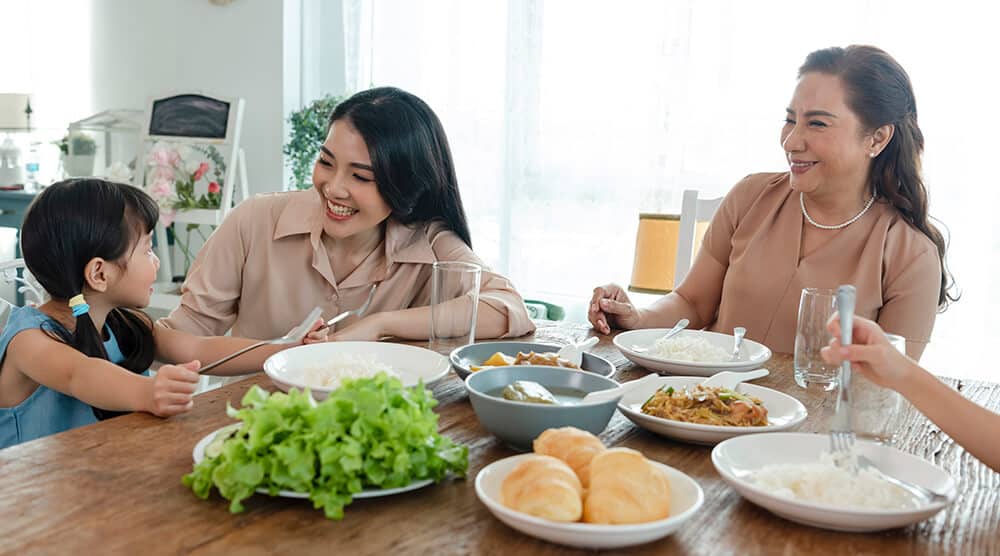
2. Thai people share food
Sharing food is a fundamental aspect of Thai mealtime etiquette, contrasting with the Western custom of every person mainly ordering individual dishes for themselves. In Thailand, meals are communal events, especially among families and friends.
Typically, everyone at the table orders a variety of dishes to be shared. The process involves starting with your own plate of rice and then adding small portions from the shared dishes, just one or two spoonfuls at a time. What you should not do is overload your plate with lots of food immediately; instead, it’s better to take a few bites and then continue to serve yourself more food gradually. You can always help yourself to more food after your first serving, little by little.
3. Thai people eat everything with rice
Rice is a staple in Thai cuisine; it’s not just a side dish but the foundation of almost every meal. Typically, a Thai meal starts with a plate of rice, and other dishes are added on top of it. This includes curries as well as soups, such as Tom Kha Gai, or Tom Yum Goong. Although they are technically soups, these dishes are not meant to be eaten on their own as is common with soups in Western cuisine. The correct way to eat Thai soups is to add a few spoonfuls of soup onto your plate of rice. It’s also good manners to add food to your plate gradually, rather than all at once. Just start with a few spoonfuls and continue adding more, little by little.
4. Rice isn’t eaten with chopsticks
